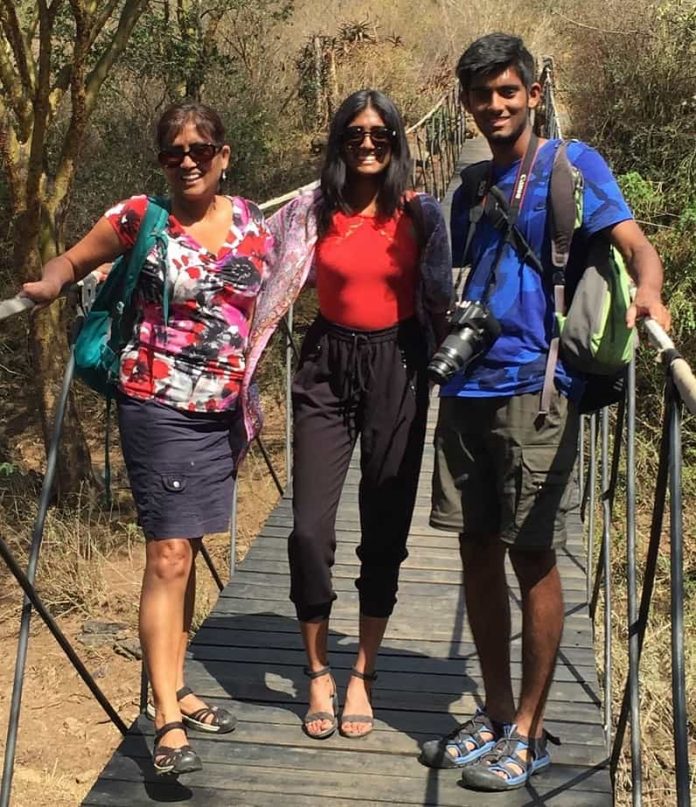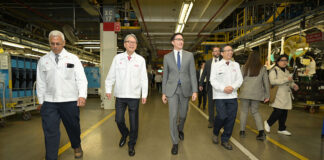Juggling her career and family, Garima Dwivedi relied on family and friends to help her recover

GARIMA Dwivedi rarely misses work. As a bureaucrat with the government and a busy mom, she just has too many responsibilities to skip a day on the job for, say, a mere headache.
But the pain that began pulsing behind her eyes one February day in 2014 was so bad that Garima, then 47, turned the car around and went home.
When she went to see her doctor, she thought it might be a sinus infection, and prescribed antibiotics. Garima had no risk factors for stroke — her blood pressure and cholesterol levels were normal, and she wasn’t overweight. But the next day she was in so much pain she stayed home again.
“I thought I was having a reaction to the antibiotics,” she recalls. When her son Janek, then age 15, came home that afternoon, he found her having a seizure.
By the time her 17-year-old daughter, Ila, got home, Garima’s speech was garbled. Ila took charge and took her mom to her doctor’s clinic near their Ottawa home.
Bleeding in the brain
The on-call team there recognized the signs of stroke and got Garima to a hospital by ambulance. She was diagnosed with a hemorrhagic stroke, which means a ruptured blood vessel was causing bleeding in the brain and had also resulted in a clot.
Garima’s brother in Calgary and parents in Vancouver were by her side the next morning. They visited her in the hospital daily and supported the kids at home while Garima began her recovery.
She spent a week in intensive care and another on the stroke floor. By the time she went home, Garima thought she was physically back to normal — but she wasn’t.
“My mom would say, ‘Sit up straight.’ I didn’t know I was drooping.” She still experiences weakness on her right side, and works on strengthening it at the gym.
Cognitively she struggled. “I needed to learn how to read and write again. I would go to the grocery store and had to work to make the link between what was written on the label and the actual food.” Months later, she’d still forget words. While Garima speaks Hindi and French, she found she could not remember them.
Someone was always there
Recently separated, Garima felt lucky to have so many family members, friends and neighbours to rely on. At first she could not drive, and people in her network took turns taking her to rehab appointments. Someone was always there for the kids, who found it difficult to see their mother so helpless. “When you are on your own, you need a network around you,” says Garima.
Stroke can happen to anyone at any age, but women typically face more challenges as they recover, says Dr. Patrice Lindsay, director of stroke at Heart & Stroke.
“Garima’s experience shows in particular the challenges women face at mid-life, when they’re often busy with careers, raising families and caring for others around them,” says Dr. Lindsay. “It can be hard to put their own health first, and give themselves permission to take the time they need to heal. We need to do more to support those women after stroke and help them make the strongest recovery possible. ”
In many ways, Garima found it easier to not have a partner in those eight months before she returned to work (part-time at first, then eventually full-time). “I needed time alone to heal and reflect.” That mental space let her get the full benefit of mindfulness-based cognitive therapy, to help her cope with the trauma and anxiety of stroke.
Thanks to the people around her, she was able to find a balance between taking care of herself and her family. “One of the positives coming out of the stroke is the reminder of the importance of relationships,” she says. “I really am very lucky.”
The problem of stroke is in South Asians is huge. And how little is the knowledge among our community about this serious condition. A lot of people do not even know what stroke means and what its signs are. The immediate signs are drooping of the face, weakness of the arm and slurring of speech. The faster you seek urgent medical attention by calling 9-1-1, the better chances of minimizing the level of disability. Eating healthy, exercising daily, managing your blood pressure, keep your diabetes and cholesterol in control, stop smoking, and manage your weight, will all help to decrease the chance of getting a stroke.
For over 60 years, Heart & Stroke Canada has been dedicated to fighting heart disease and stroke. Their work has saved thousands of lives and improved the lives of millions of others. To learn more about The Heart and Stroke Foundation please visit http://www.heartandstroke.ca/











